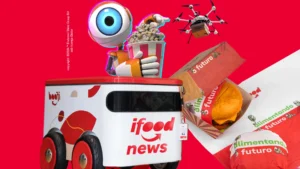In addition to frying potatoes, the machines help reduce costs and waste; find out how they work
Have you ever thought about ordering a pizza, a hamburger or a meal that were entirely made by a robot, without (much) help from humans in the kitchen? You don't need to think anymore: this is already happening.
Restaurants, bars and even vending machines are combining artificial intelligence, robotics and automation to improve your operation. In addition to preparing food, robots help reduce costs, reduce waste, gain productivity, avoid food contamination and make up for the lack of labor.
And they can even strengthen relationships with customers, as employees who are freed from these repetitive tasks can dedicate themselves to doing what machines cannot yet do.
Want to know what robots are doing in the kitchen and lounge? Here are some examples:
Commanding the plate
Burger with French fries It's a great combination for those who eat, but not so much for those who prepare. O Flippy robot It's a kitchen assistant who takes care of this service: he puts the meat on the plate, turns it over at the right time, puts it on bread and even fries the potatoes to make them crispy and dry.
Caliburguer, a burger restaurant in California (United States), believes that with the robot the company will improve the products it sells, reduce waiting times, guarantee food safety and free up employees to interact with customers.
Assembling the burger
Think about the logic of a car assembly line. First one part goes in, then another, then another and at the end, the car is ready to roll. Alex Vardakostas uses this concept to assemble the burgers he offers at his store, Creator, also in California. There, the own machine he selects and cuts the bread, adds the side dishes and sauces, grills the meat and cuts the tomatoes and onions on the spot (which he says is the special touch of the snack). Humans only appear when packaging the product for the customer to take away.
Managing orders
At Spyce, a restaurant created by mechanical engineering students at the Massachusetts Institute of Technology (MIT), in the United States, almost all dish preparation is done by robots. A team of humans is responsible for preparing the ingredients in another kitchen and putting the finishing touches on the dish. But the “core” is entirely the responsibility of the machine, which receives the order made through self-service terminals, chooses the ingredients and delivers the assembled dish. Important to remember: culinary expertise is human and bears the signature of chef Daniel Boulud. The restaurant was so successful that recently was bought through the chain of “fast salad” Sweetgreen.
Preparing the perfect pizza
One of the things that is valued in a pizza is the balance between the amount of dough, sauce and ingredients that go into this beloved dish. Two establishments in the United States use technology to try to reach match perfect.
In the Costco department store food court everyone can see the pizza production step by step mounted mezzo by humans, mezzo by the machine. First the employees take the dough; instead of opening it on a roll, they place it in a machine already configured with the desired thickness. Then the humans take the round to another machine, which will spread the sauce in such a uniform way that it even brings peace to the most distressed hearts. And then someone else finishes by adding cheese and putting it in the oven. Everything quickly!
A technology company, Picnic, created an equipped assembly line with artificial intelligence capable of producing up to 100 pizzas per hour. The system uses modules that release the ingredients (cheese, sauces, sliced vegetables, proteins) in pre-specified quantities, as the dough passes through them. The entire process can be done by a single person, responsible for refilling the modules and finishing the dish.
“Waiter, here at this table of bytes…”
To overcome the lack of labor, a Chinese food restaurant in the state of Michigan (United States) has two robots to take the order to the consumer's table: Bela and Hola. They're like rolling shelves, but they have an interface that resembles cats. In fact, those who caress even receive a purr in return.
Bela and Hola have four trays, a touch screen and an infrared camera to navigate the restaurant floor. A human being loads the trays with the orders, enters the table number and the robots take the food to the customers.
The functions of taking orders, receiving payment, answering questions about the menu or serving dishes with hot liquid are still performed by real employees. “It might spill,” admitted a waiter.
Who also helps with the administration of the restaurant hall is a robot made by the Japanese company Smile Robotics which, in addition to serving, uses its robotic arm to take dirty dishes used by customers back to the kitchen.


